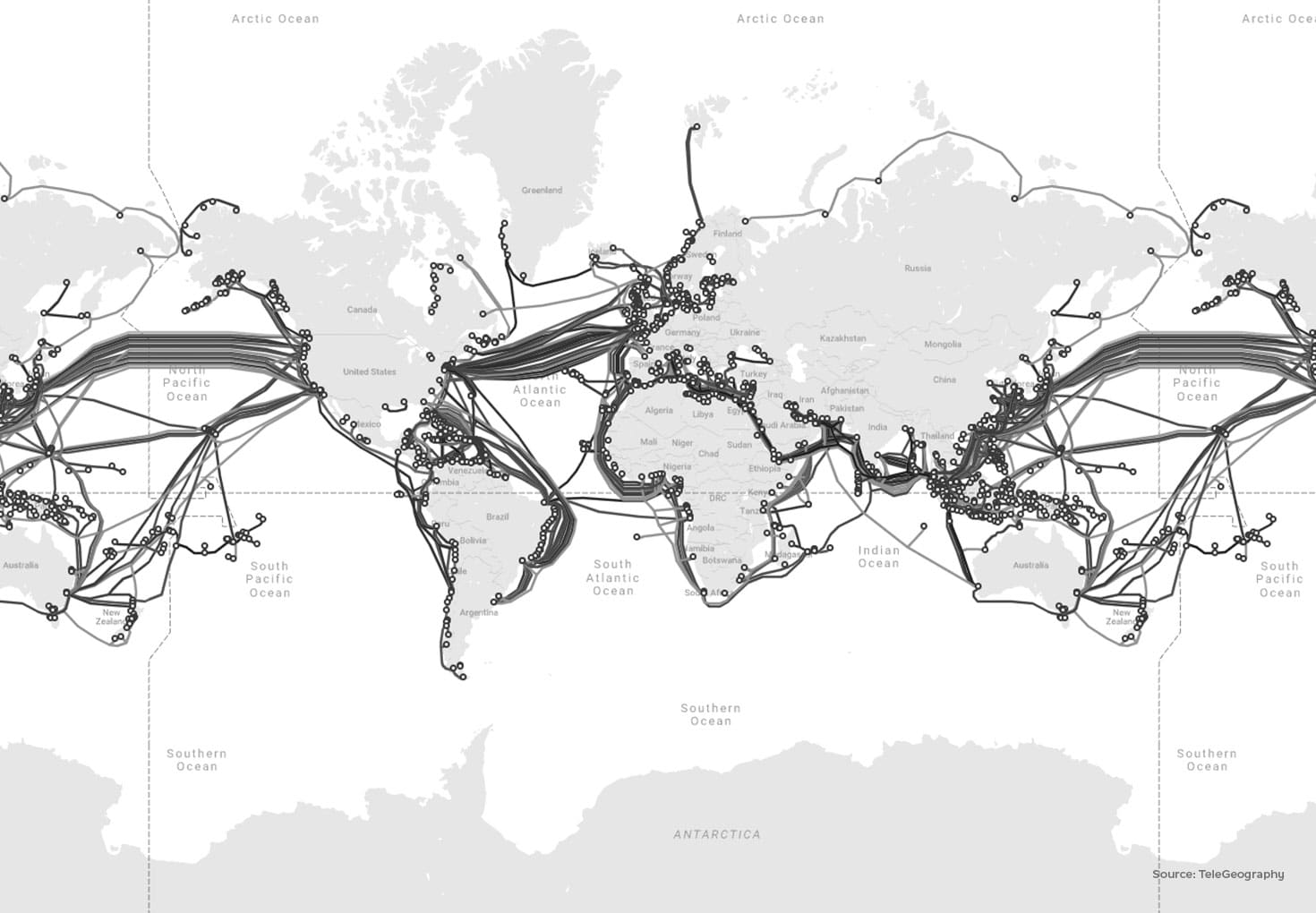Submarine cables are part of the Internet’s “backbone”. Most of the world’s Internet traffic travels over these cables connecting continents and countries under the ocean. Therefore, they play an important role in meeting the needs of international bandwidth usage.
What are submarine cables?
Submarine cables or submarine communications cables are optical fiber cables that lay on the sea bed to carry data traffic across oceans and seas. They connect regions and countries to provide high-speed Internet access.
As a curiosity, it is worth mentioning that the first submarine cable was built in the 1850s to carry telegraphy traffic. However, that first transatlantic telegraph cable was only operational for three weeks. Because an attempt to achieve faster operation destroyed it due to excessive voltage.
The oldest submarine cables still in service today are Denmark-Sweden 15, Rønne-Rødvig and Scotland-Northern Ireland 1 — in operation since 1989.
Submarine cables growth
The need for new undersea cables increases as international bandwidth demand continues to grow. Some of the submarine cables created during the past few years are:
- Curie (2019), connecting California and Chile.
- Scylla (2021), connecting the United Kingdom and the Netherlands.
- EllaLink (2021), connecting Brazil to Portugal.
Moreover, the list of submarine cables continues to grow. New submarine communications cables are expected to enter service during the following years. For instance:
- PEACE, short for “Pakistan & East Africa Connecting Europe” (2022), connecting Singapore, Pakistan, Kenya, Egypt and France.
- Asia Direct Cable (2023), connecting China, Japan, Philippines, Singapore, Thailand and Vietnam.
- 2Africa (2023), connecting 33 countries in Africa, the Middle East and Europe.
- Galapagos Cable System (2023), connecting continental Ecuador and the Galapagos Islands.
- Firmina (2023), connecting the United States to Brazil, Uruguay and Argentina.
- Trans Adriatic Express (2023), connecting Albania and Italy.
- Bifrost (2024), connecting Guam, Indonesia, Philippines, Singapore and the United States.
- Medusa Submarine Cable System (2024), connecting Algeria, Egypt, France, Greece, Italy, Morocco, Portugal and Spain.
According to TeleGeography’s State of the Network report (2022 edition), capacity has grown across all regions. However, the region that has experienced the most rapid growth of international bandwidth is Africa. It has grown at a compound annual rate of 45% between 2017 and 2021.
It is interesting to note that giant content and cloud service providers — Google, Facebook, Amazon and Microsoft — have surpassed carrier networks in international bandwidth usage. They account for two-thirds of all used international capacity. However, these technology giants are only dominant users in the trans-Atlantic route, not in the Europe-East Asia route.
Number of cables worldwide
The number of submarine cables worldwide has grown steadily over time. Here is a list of the number of cables in service over the last decades, according to TeleGeography’s submarine cables map.
| Year | Number of submarine cables in service |
| 1989 | 3 |
| 1994 | 37 |
| 1999 | 103 |
| 2004 | 169 |
| 2009 | 241 |
| 2014 | 318 |
| 2019 | 398 |
| 2020 | 419 |
| 2021 | 436 |
| 2022 | 459 |
Undersea cables lifetime
Submarine communications cables are designed to last about 25 years. However, their lifetime depends on their revenues. So, if operational costs exceed revenues, they might be decommissioned ahead of time.
Retired cables
Here is a list of submarine cables that have already been retired.
| Name | Locations connected | Length | Entered service in | Decommissioned in |
| Gemini | United States and the United Kingdom | About 12,600 km | 1998 | 2004 |
| RJK | Russia, Japan and Korea | 1,762 km | January 1995 | 2008 |
| China-US CN (China-US Cable Network) | United States and China | About 30,000 km | 2000 | December 2016 |
| TAT-14 | United States, United Kingdom, France, the Netherlands, Germany and Denmark | 15,428 km | March 2001 | December 2020 |
Finally, it is worth mentioning that the traffic graphs of the main Internet Exchange Points also show an unstoppable growth in Internet traffic around the world. This rise was especially notable between 2020 and 2021, with the acceleration of the digital economy due to the Covid-19 pandemic. Besides, some maps collecting data from different activities and sectors also show the extent of global interconnection growth.
Sources: Telegeography and Submarine cables map.




